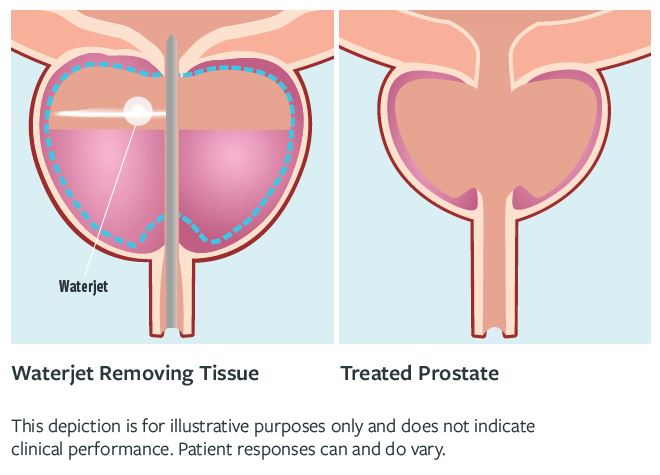Aquablation
.jpg)
Mild LUTS caused by BPH is usually managed conservatively. Drugs such as alpha blockers and 5-alpha-reductase inhibitors may also be used. If these treatments have not worked, there are a range of surgical options that may be considered. These include transurethral resection of the prostate, transurethral vaporisation, holmium laser enucleation, transurethral incision of the prostate, insertion of prostatic urethral implants and prostatectomy.
Every prostate is unique in size and shape, so it is important for a surgeon to customize the surgery to the patient’s specific anatomy.
Aquablation therapy is the only procedure that combines a camera (called a cystoscope) with ultrasound imaging, giving the surgeon the ability to see the entire prostate in real time.

All other surgical procedures use only a camera, limiting the surgeon’s ability to see.
The addition of ultrasound imaging in Aquablation therapy allows Mr Gordon to map which parts of the prostate to remove and which parts to avoid.
Mr Gordon will work to map around the parts of the prostate that cause irreversible complications like erectile dysfunction, ejaculatory dysfunction, and incontinence.
With the surgical plan in place, a robotically-controlled, heat-free waterjet removes the prostate tissue that has been mapped out. This robotic technology minimizes human error in removing prostate tissue, and ensures the prostate tissue is removed precisely, consistently, and predictably.